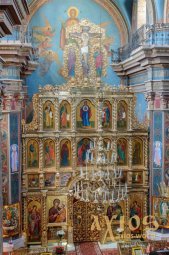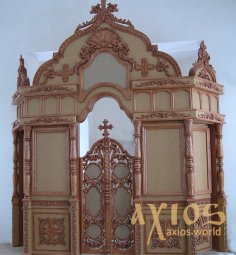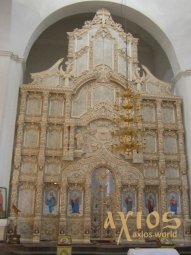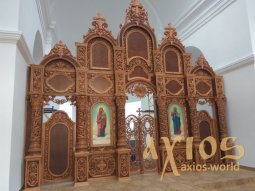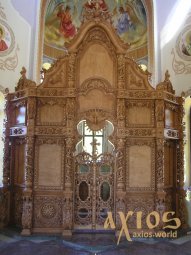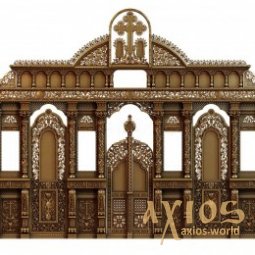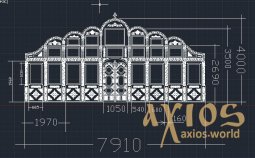The church iconostasis is a partition with icons placed on it in several rows, which in the Orthodox tradition separates the altar from the main part of the church. She appeared in church buildings not immediately, but over time and in connection with the development of worship. The very word “iconostasis” has been used only since the middle of the 17th century.
Organization of space for worship in the first centuries of Christianity
Initially, Christian worship was held in large private houses and catacombs, where of course there was no question of any division of space. With the advent of the first temples in the IV century, low partitions between the altar and the temple – templons were introduced, as well as the curtain, which are closed at certain moments of the liturgy. Templons from above were blocked by a beam - an architrave, under which the curtain was attached. Such a delimitation of space was not accidental: at that time the churches were filled with people, which made it difficult for the clergy to perform divine services. For this, a barrier was constructed that physically separated the crowd of parishioners from the altar. In it there were made the central gate for the priest or bishop, called the "royal", and the side doors for deacons.
The emergence of iconostases and their development
The iconostasis in the temple, in our modern understanding, appeared even later - in the 9th - 11th centuries. The heresy of iconoclasm, which had long dominated Byzantium, was the main obstacle to this. But with the development of the theology of the icon, written images began to be placed directly on the altar barrier. Church iconostases of that time were low, and included only one or two rows of icons: festive and deesis. The festive row housed the icons of the main church holidays. The Deesis (from the Greek “prayer”) is an image of the Lord Jesus Christ in glory in the center and with the saints left and right, mostly the Mother of God and John the Baptist, who pray to Him for the whole world. This icon is part of most of the iconostases, because for a long time the altar partition with icons itself was called the "Deesis". The carved iconostasis with many tiers of icons, each of which has its own significance, appeared already in the XV - XVII centuries as a legacy of the Baroque era with its magnificent frame and symbolism. This type of iconostasis became the main one for large cathedrals, while a simple two-row iconostasis began to be placed in small churches.
Where can I buy or order an iconostasis in Ukraine?
The material for the iconostases is soft wood, as well as marble stone and even porcelain. Depending on the type of material and the method of its processing, the prices for iconostases for churches in Ukraine can radically differ. Also in this matter, the necessary sizes and the number of tiers for the icons are important. You can buy an iconostasis for a temple right from home by making a couple of clicks on our website. Our managers will immediately call you to clarify the details and discuss the installation of the order. Axios online store is the best way to buy an iconostasis for a temple in Ukraine.

